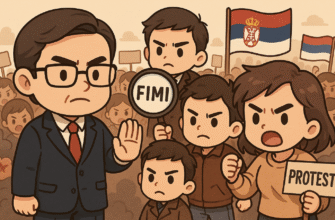It unexpectedly turned out that Belarusian media with state ownership began writing and commenting on the second round of presidential elections in Romania even after they ended.
May 1-25, 2025
NEWS.BY, CTVBY, ONT TV, SBTV
24 videos
FIMI/DIMI framework
Identified systematic use of manipulative techniques
Average manipulative intensity: 7.8/10
Signs of FIMI (Foreign Information Manipulation)
Dominance of negative vocabulary and geopolitical concepts
Characteristics: Use of emotionally charged language, selective quoting, distortion of context to create a negative image of Romanian elections.
Examples: “electoral circus”, “cancellation of unwanted candidates”, “dead souls in voter lists”
Characteristics: Promotion of unfounded theories about external control, manipulations and hidden forces controlling Romanian politics.
Examples: French intelligence interference, Telegram censorship, globalist conspiracies
Characteristics: Artificial division of Romanian society, creation of false dichotomies between “people” and “system”.
Examples: “True Romanians against Brussels puppets”
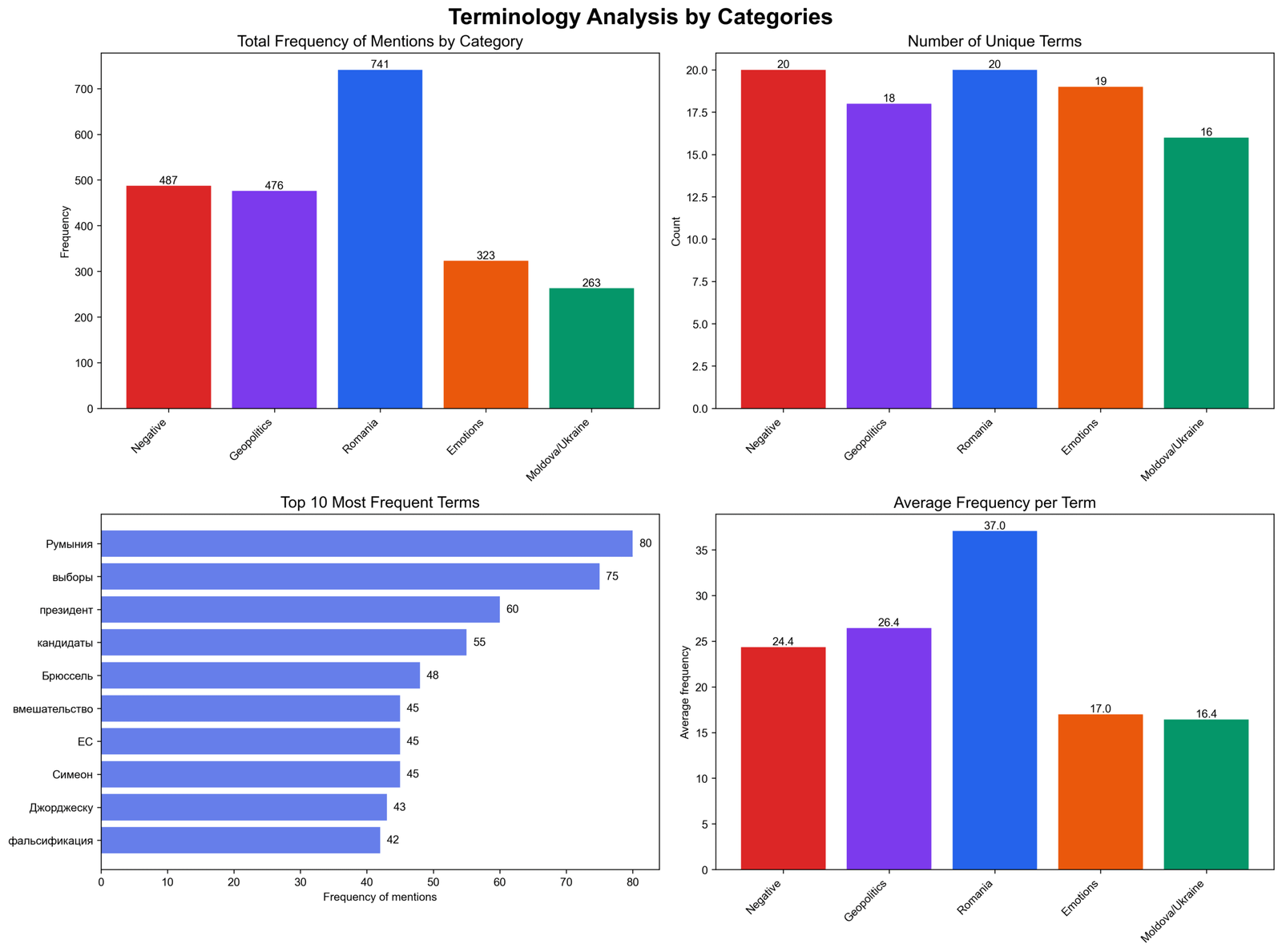
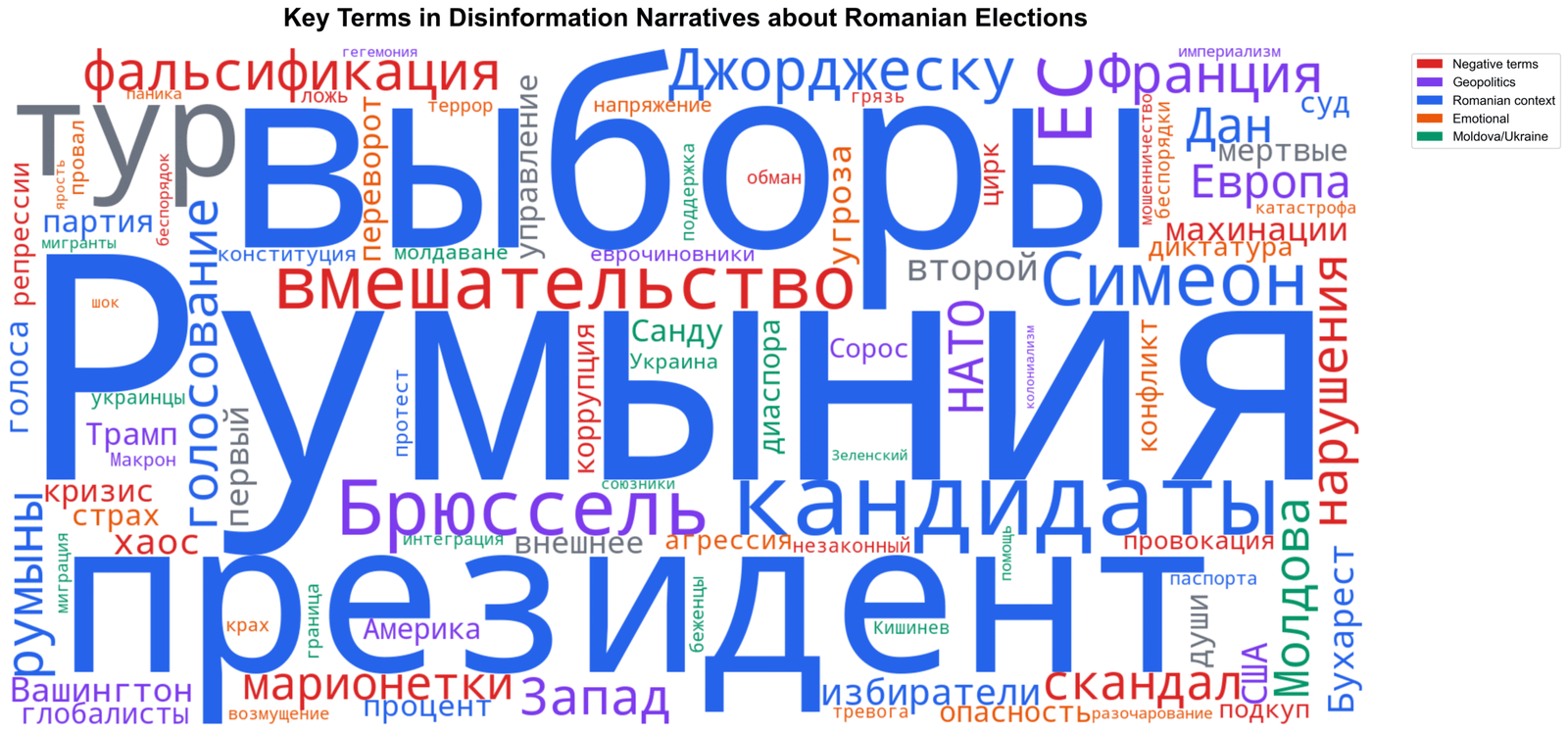
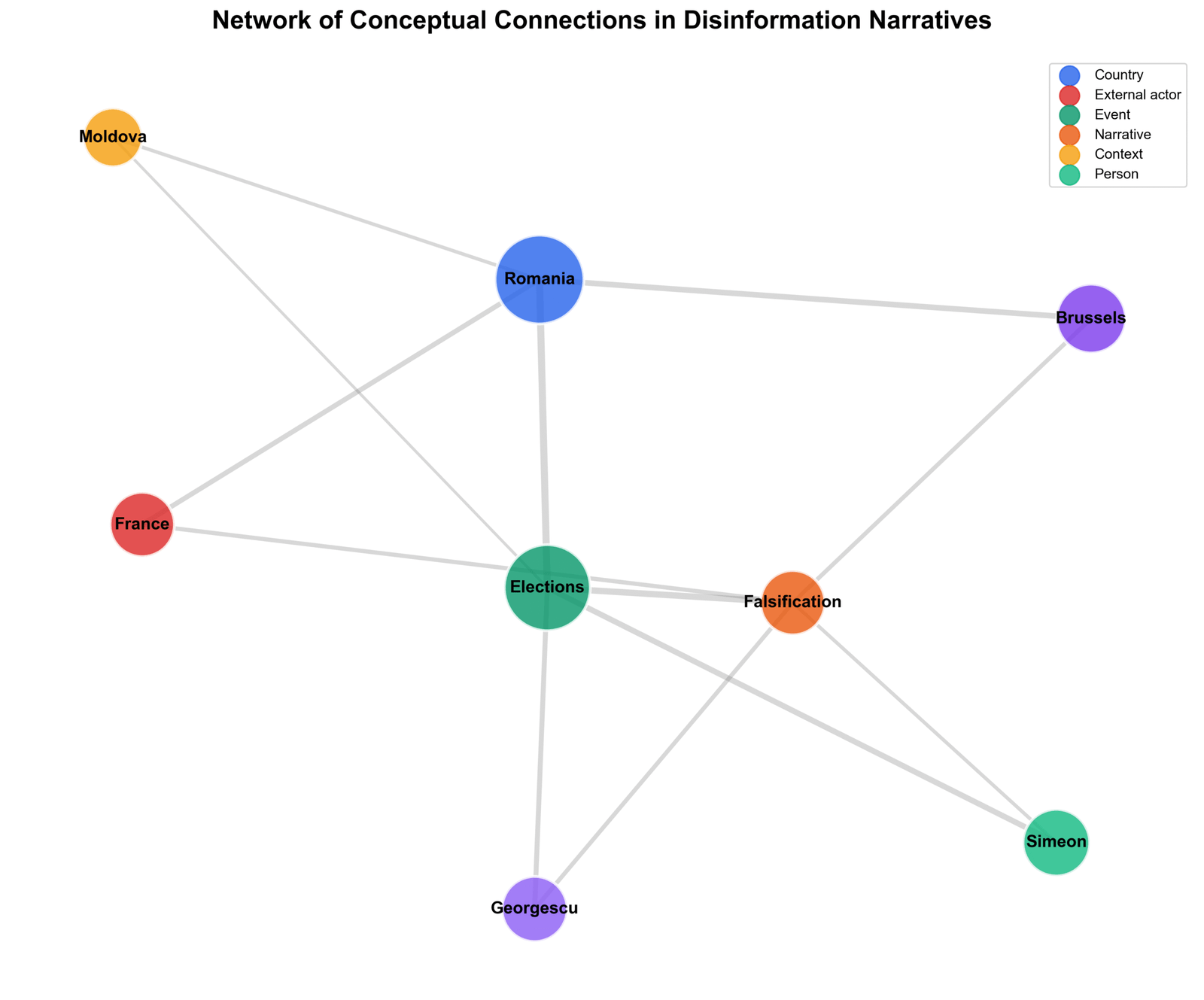
Key actors analysis
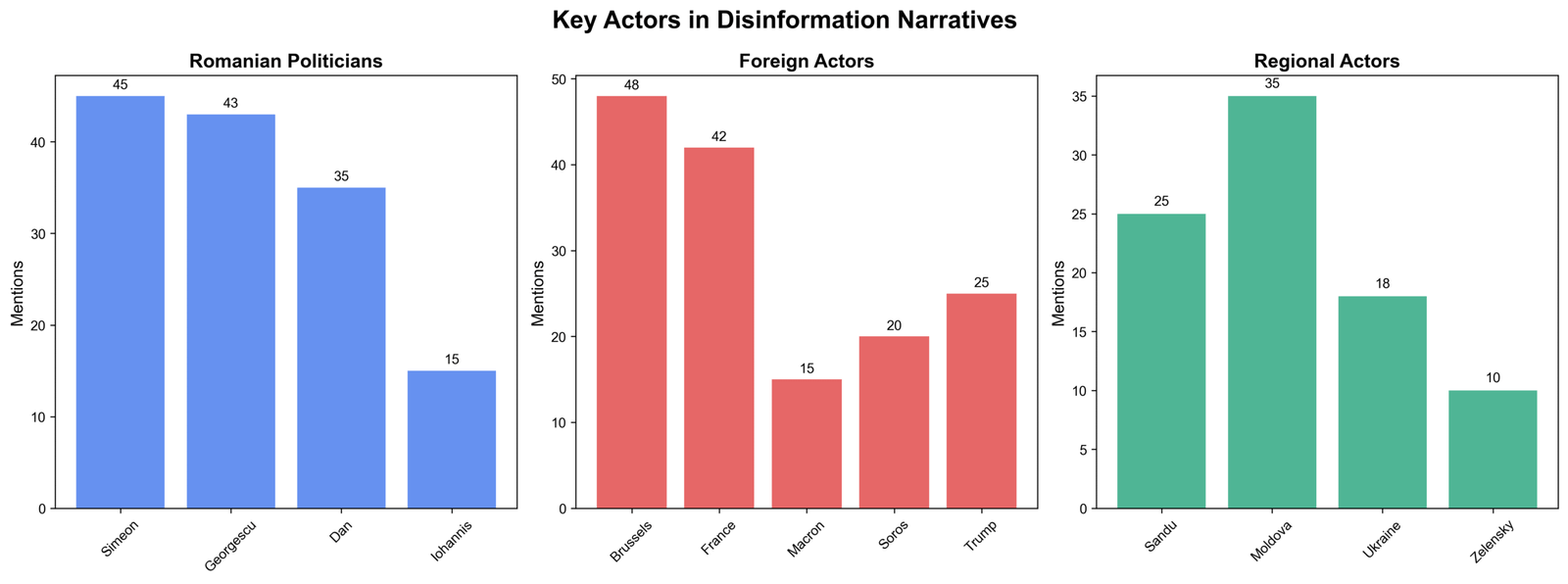
Launch of narrative about “electoral circus” and “cancellation of unwanted candidates”. Focus on external control.
Medium risk
Intensification of conspiracy theories, accusations of mass falsifications, discreditation of European institutions.
High risk
Mass claims about violations, “US interference”, voter bribery, ballot manipulations.
Critical risk
Interpretation of results as “systemic crisis”, predictions of “radicalization” of Romanian society.
Medium risk
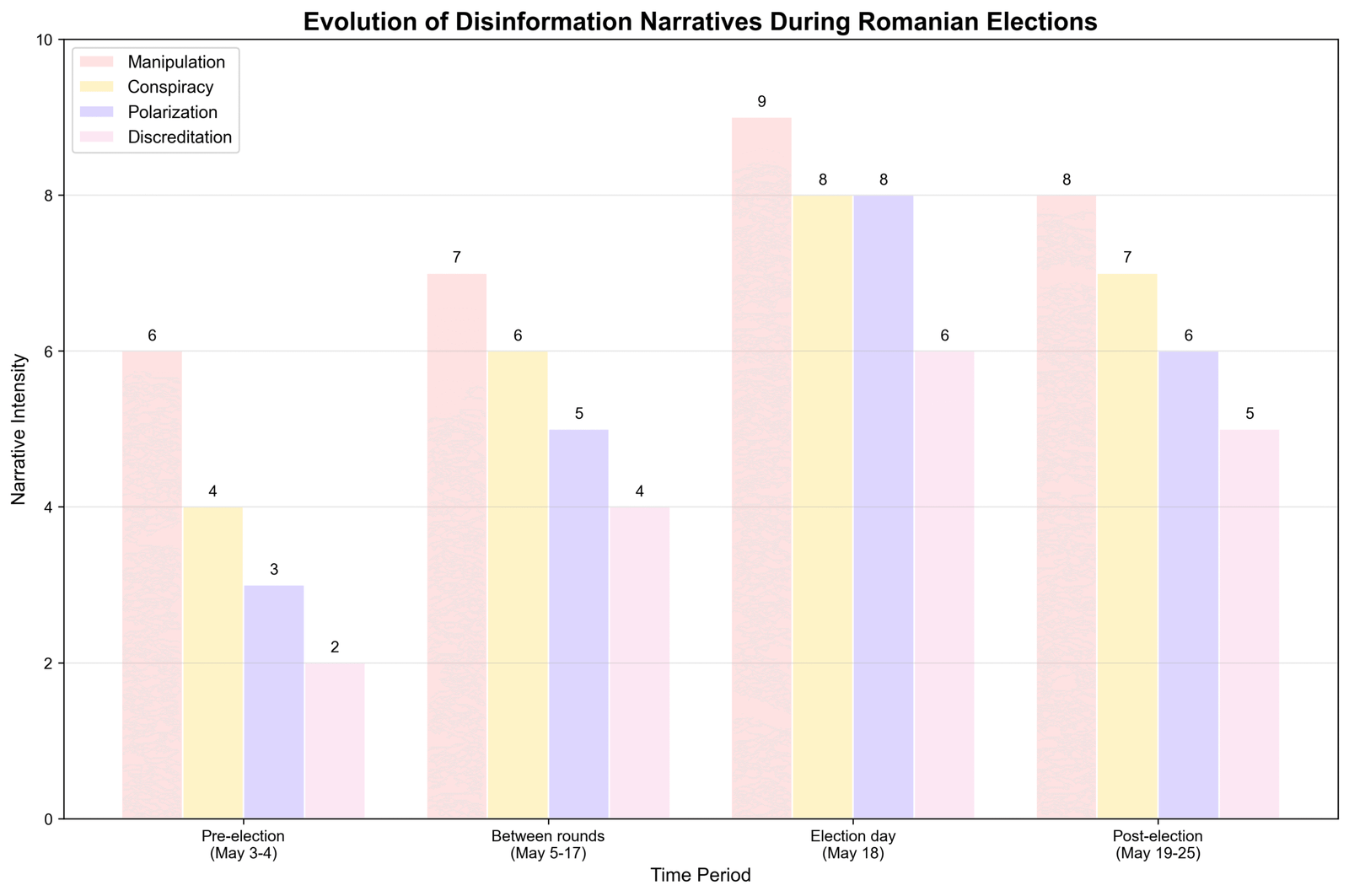
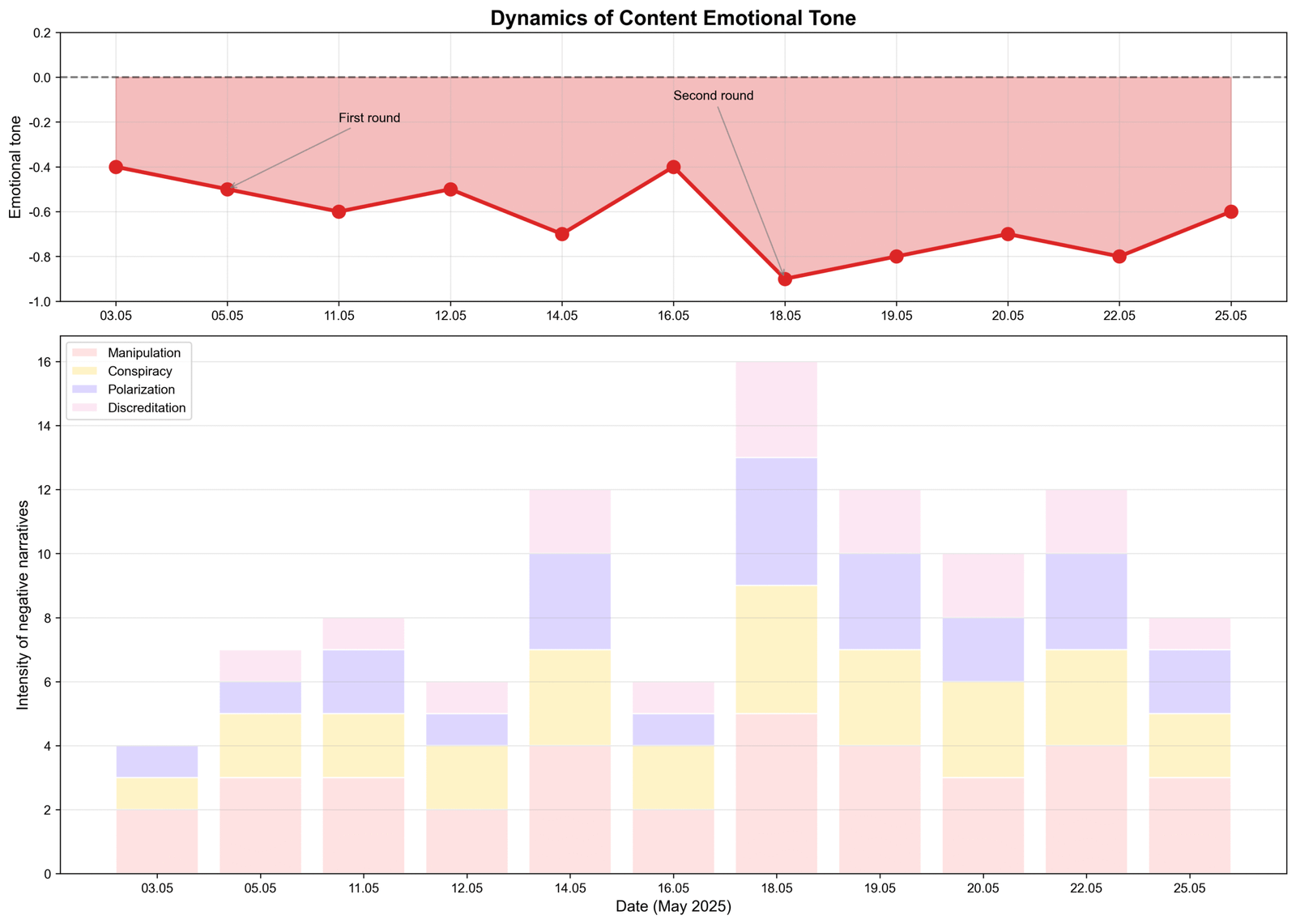
- Narrative of “dead souls” (fake voter registrations)
- Accusations of French intelligence interference
- Claims of Telegram censorship
- Manipulations with Moldovan diaspora
- Constitutional Court scandal
- Protests with passport destruction
Main conclusions:
- ✓
Identified coordinated campaign to discredit Romanian electoral process - ✓
Systematic use of FIMI techniques (Foreign Information Manipulation and Interference) - ✓
Dominance of manipulative techniques (37% of all narratives) - ✓
Significant role of conspiracy theories (28% of narratives) - ✓
Persistent connection between concepts “Romania”, “falsification”, and “external forces”
Recommendations for countering:
- ✓
Development of media literacy and training in recognizing manipulative techniques - ✓
Prompt fact-checking of claims about “external interference” - ✓
Analysis of the Moldovan factor in regional context - ✓
Monitoring narratives about European integration - ✓
Study of social platform policy impact - ✓
Development of countermeasures against emotional manipulations
Identified signs correspond to Foreign Information Manipulation and Interference criteria:
- Coordinated distribution through state media
- Use of manipulative techniques in 37% of content
- Targeted discreditation of democratic processes
- Promotion of polarizing narratives in 23% of materials
- Systematic nature of campaign over 3 weeks
Distribution of manipulative techniques







